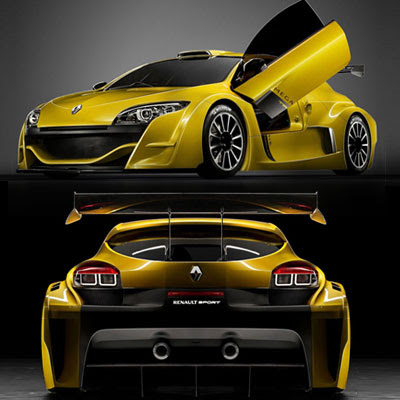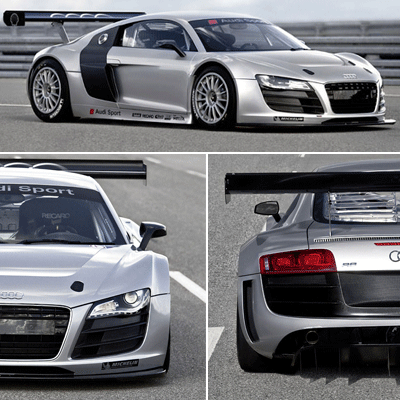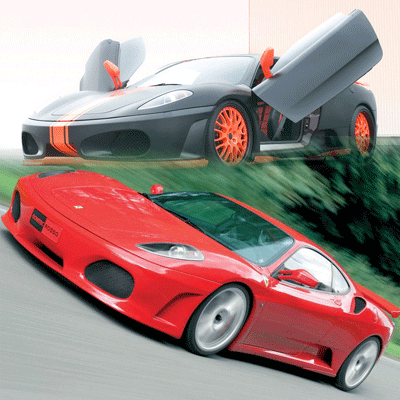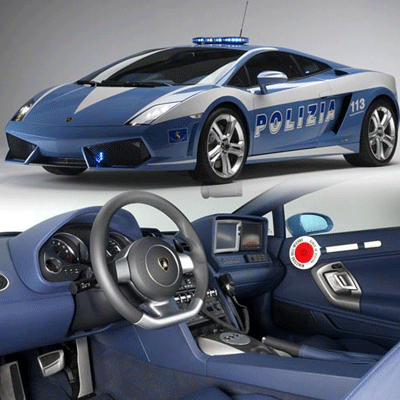In 1985, when few models really stood out from the midsize pack, Ford created one of the most influential vehicles of the late 20th century: the Taurus. Radically styled and intelligently packaged, the Taurus won the hearts and minds of millions of car buyers, and for over a decade, it was a dominant force in the retail car market. Eventually, competition from the Toyota Camry and Honda Accord proved too much for Ford to handle, and the Blue Oval hung its game-changing sedan out to dry. Product development dollars were funneled to trucks and SUVs, and the Zodiac's bull died a pauper's death in 2007 after an achingly long stint as a tattered fleet Queen.
When Alan Mulally took the helm of FoMoCo, the new CEO wondered why the recognizable – if tarnished – Taurus name had been abandoned. So a branding Band-Aid was affixed to the underperforming Five Hundred sedan and, unsurprisingly, consumers saw through the botched rebadging. The "new" Taurus was still the old Five Hundred; a dynamically challenged sedan whose biggest selling point was a really large trunk. In hindsight, the move may have been a way to revive the Taurus in the public's consciousness as Mulally and company went back to the drawing board to create a new world-class sedan capable of taking on the biggest names in the segment. The 2010 Ford Taurus is here... but does it have what it takes?
Before the rebadged Taurus arrived in 2008, the Blue Oval's bull was a midsize sedan. Not anymore. The 2010 model is larger... much larger. At 202.9 inches, the Taurus spans an additional five inches over the Toyota Avalon – or to put its gargantuan length into better perspective – nearly an inch longer than a Chevrolet Tahoe. That makes it a sedan even Baby Huey can love. But the 2010 Taurus doesn't just differentiate itself from past Taurus models in size, it's more upmarket in both look and feel.
Undoubtedly, one of the primary reasons that the last Taurus reclamation project fell flat was the donor Five Hundred's utterly uninteresting exterior design. The 2008 Taurus was so bland and unnoticeable it needed a chromed, Flava-Flav three bar grille to keep other motorists from running into it. For 2010, Ford has taken a different approach, making the two-ton sedan stand out with strong character lines on the hood and beltline that create a wide, muscular and luxurious exterior.
Up front, Ford has inset a set of modern, dynamic headlamps to accentuate the Taurus' sophisticated mug. The lower fascia makes this Blue Oval appear more aggressive, with a wide, trapezoidal shape reminiscent of the so-called "Kinetic" designs found on the European Mondeo and Focus. Our only issue is with the contrived three bar grille, which contrasts nicely with the lower fascia but falls short with its odd looking holes on the top and bottom slats. Out back, Ford has attempted to recapture some of the spark from its 2003 427 concept, so the Taurus's rump receives a set of squarish taillamps and a canted stance that gives the bull's butt a dynamic presence, with a minimalistic bumper that does its best to keep the already prodigious rear overhang in check.
While there's no question the Taurus is remarkably better looking than its predecessor, if Ford wants to recapture buyers, the interior would need to be special. In the past, Ford aimed for "class competitive" interiors, and in some cases, using the term "competitive" would be... generous. Thankfully, the days of strategically placed soft touch materials attempting to hide cheap dashboard bits and mismatched plastics are a thing of the past.
Seated inside our tester's substantial cabin, Ford's upmarket assault is front and center, with a thick, leather-wrapped steering wheel (fitted to every 2010 model) and exceedingly comfortable leather thrones that wouldn't feel out of place in something costing tens of thousands more. Ford has opted for a dual cockpit approach for the all-new Taurus, with massive, symmetrical overhangs at each end and an impressive center stack sweeping back to strike a perfect balance between visual appeal and terrific ergonomics. HVAC and radio switchgear are well within reach and the controls are exceptionally easy to navigate. And while the front may be one of the best seats in the house, since the Taurus is a family sedan at heart, Ford paid special attention to the occupants in the rear. In smaller vehicles, the kiddies tend to kick the driver's seat. In the Taurus, there's more than enough legroom to accommodate your average chocolate-faced adolescent. When the time comes to haul the detritus of modern life, the new Taurus' 20 cubic-foot trunk is another big plus for the family man or woman, with ample space to fit luggage, golf clubs, groceries and some camera equipment – all at the same time.
If you get gratuitous with the options, the Taurus can easily crest $40,000 with the addition of adaptive cruise control, moonroof, navigation and all-wheel drive, but our $30,980 SEL is probably a good indication of what the average Taurus will be outfitted with, and although it didn't come equipped with Ford's excellent but pricey navigation system, SYNC was included. As we've testified before, Ford's SYNC voice-control system just works, with Bluetooth, USB and auxiliary inputs for your MP3 player or phone a few clicks and spoken words away from connection. New for 2010 is the addition of Bluetooth Audio, which allows one to connect a Bluetooth-enabled MP3 player like an iPhone or iPod Touch to the stereo without wires. We're continuously amazed at how comfortable and intuitive SYNC is, and over time, it's become a staple of the Ford Driving Experience.
After spending time inside the new Blue Oval flagship, its obvious that Ford was shooting for world class levels of equipment and materials. But while the Taurus's cabin is a huge leap forward for Ford-badged vehicles, all is not rosy. Since the interior of the Taurus is so massive, spaces needed to be broken up, and the tan, leather-clad innards of our tester joins faux wood accents to accomplish the task. We're not huge fans of fake trees, and the materials look real enough, but that doesn't mean we're partial to it. The wood – particularly with the beige interior – is just too dowdy and dull, especially when matched with such a dynamic, modern design inside and out. Further, we could have done without the oddly hidden cupholders north of the center arm rest. It's nice to have them out of view when not in use, but the lines are very visible and break up an otherwise attractive center stack.
However, none of these nits get in the way of the Taurus driving experience, as the massive sedan is a competent and coddling cruiser. At just under 4,100 pounds, the Taurus is fully 600 pound heavier than a Chevrolet Malibu, and nearly a foot longer. Despite this, the Taurus' agility is impressive for a vehicle occupying such a sizable land mass.
During a particularly healthy flogging on some twisty B-roads, the Taurus proved a relatively tight package, with limited body roll and weight-defying grip. But when pushed hard, the Taurus feels too tall, too long and too heavy. The upgraded independent multi-link suspension offers a compliant ride that doesn't come across as floaty, and while the steering is fairly precise and decently weighted, road feel is nonexistent. The new Taurus is no backroad bomber, but this hefty sedan counters with the ability to isolate occupants from the world around them. Noise levels are nicely muted, making it easy to have an "indoor" conversation with back seat occupants, and pot holes and rail road tracks are soaked up without much hassle; something we can't say for some of the Taurus' competition, let alone your average purpose-built sports sedan. Obviously, the enthusiast set isn't the fish Ford is looking to hook, so it's comfort uber alles, and at that, Ford has succeeded.
On the power front, the Taurus makes due with a carryover powertrain in the form of Ford's 3.5-liter V6. With 263 horsepower and 249 pound-feet of torque channeled through a smooth-shifting six-speed automatic transmission, the Taurus is a lackadaisical cruiser, with just enough acceleration to keep you out of trouble, but hardly enough to get the blood pumping. Naturally, those looking for more pop can opt for the 365-hp EcoBoost SHO variant, but that starts at over $37,000. We suspect the average consumer will be content with the base powertrain, as most potential Taurus buyers probably don't tussle regularly with their inner Mario Andretti. With our right foot held largely in check, we achieved 22.9 mpg in mixed driving; a respectable number for a vehicle this size, and right at the center of its 18/28 EPA numbers.
With the new-for-2010 Taurus, you get the overwhelming sense that Ford has created a vehicle that knows exactly what it can and can't do. It delivers on style, comfort and features, while leaving sportiness to lighter, more dynamic performers like Dearborn's own Fusion. That can only help the Taurus compete against the likes of Toyota and Honda, and with customers placing more emphasis on value, the 2010 Taurus could give luxury stalwarts like the Cadillac DTS, Lexus ES, Acura RL and even the Lincoln MKS, something to worry about. But that can only happen if the new Taurus is bold enough and good enough for consumers to forgive Ford for its past sins with the Taurus. It's time to get over it – and after a week – we have.
[Source: Autoblog]




